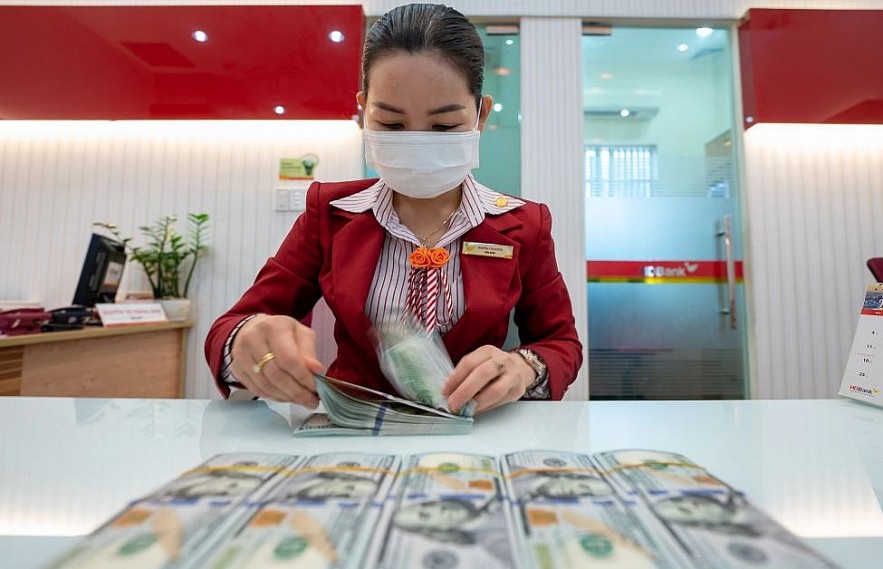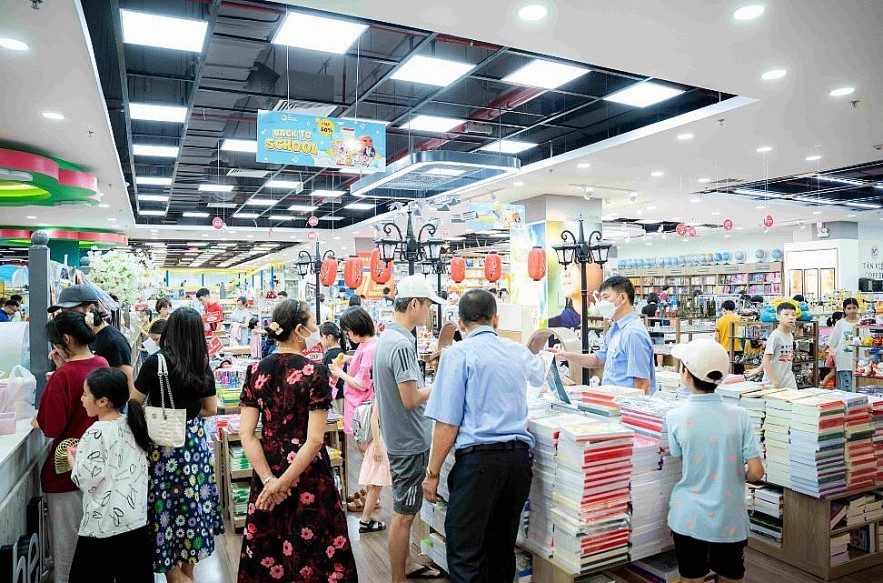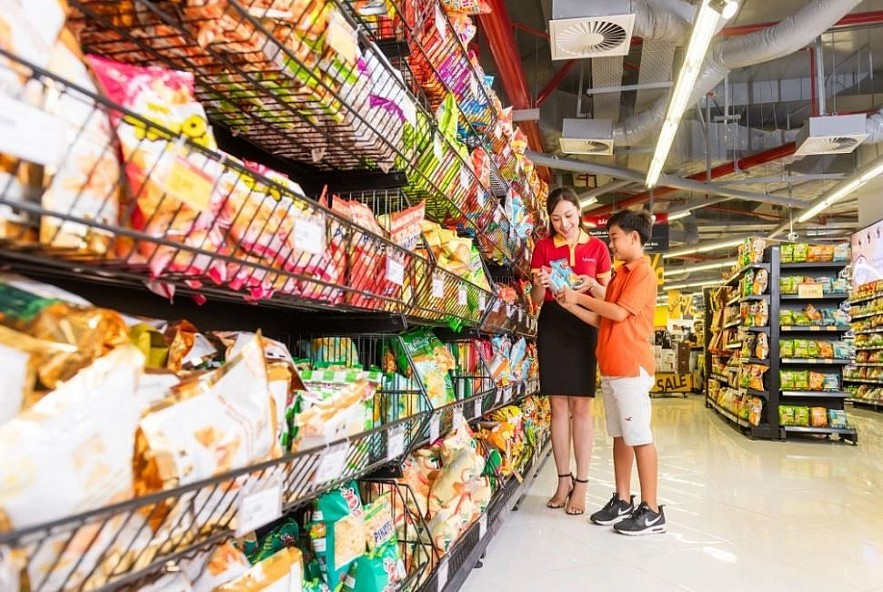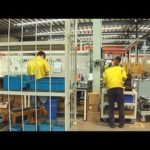|
Business Briefing Reference exchange rate: VND 23,227/USD Export news: Agro, forestry, and aquatic exports surge 13 percent in eight months Production news: Industrial production bounces back quickly Weather Forecast The North’s weather will be influenced by a low-pressure trough. The South is influenced by the southern edge of the trough in combination with the southwest monsoon. |
Business Briefing
Reference exchange rate
The State Bank of Vietnam set the daily reference exchange rate for the US dollar at VND 23,227/USD on September 5, up VND 8 from the last working day before the four-day National Day holiday (August 31). With the current trading band of +/-3 percent, the ceiling rate applied to commercial banks during the day is VND 23,923/USD, and the floor rate is VND 22,530/USD.
The opening-hour rates at many commercial banks stayed stable. Vietcombank listed the buying rate at VND 23,290/USD and the selling rate at VND 23,600/USD, unchanged from August 31. BIDV also kept both rates unchanged at VND 23,320/USD (buying) and VND 23,600/USD (selling). In the week from August 29-31 before the National Day holiday from September 1-4, the daily reference exchange rate was adjusted up on the first two days and down on the third day, ending the week up VND 8.
 |
| Photo: Zing |
Export news: Agro, forestry, and aquatic exports surge 13 percent in eight months
Vietnam’s export value of agro, forestry, and aquatic products in the first eight months of the year hit about US$36.3 billion, a year-on-year rise of 13.1 percent, according to the Ministry of Agriculture and Rural Development (MARD). Of which, the export value of major agricultural products in the eight months was estimated at US$15 billion, while the value stood at $11.8 billion for forest products, US$7.5 billion for seafood products, and US$258.6 million for livestock products.
In August, the export value from these products reached nearly US$4.4 billion, a rise of 32 percent year on year and 0.3 percent month on month. During the first eight months, the trade value of these products was estimated to reach US$66.2 billion, up 8.7 percent in the year. Therefore, the agriculture sector enjoyed a trade surplus of US$6.3 billion in that period, a surge of 94.6 percent over the same period last year.
In January-August, seven products gained export value exceeding $2 billion, including coffee, rubber, rice, vegetables and fruits, cashew nuts, shrimp, and wooden furniture. Many products saw an upturn in exports, such as coffee (40.3 percent), rubber (8.1 percent), rice (8.1 percent), peppercorn (8.2 percent), cassava (22.5 percent), tra fish (82.6 percent), shrimp (22 percent), and furniture (6.5 percent).
However, a downturn was also recorded in some other products, including vegetables and fruits (13.9 percent), cashew nuts (nearly 10.4 percent), and livestock products (12.3 percent). In the first eight months of this year, Asia remained the major market for Vietnamese agro, forestry, and seafood products, accounting for 43.1 percent of the total export volume, while America ranked second with 28.9 percent and Europe third with 11.8 percent.
The US continued to be the largest export market of those products, with revenue of about US$9.6 billion, followed by China with $6.5 billion and Japan with US$2.7 billion. In the first eight months, the agriculture sector exported valuable and quality products to many countries, such as mango, dragon fruit, passion fruit, longan, and lychee, especially those with big markets such as the EU, US, Australia, Japan, South Korea, New Zealand, China, Middle East, and ASEAN.
 |
| Photo: Zing |
Production news: Industrial production bounces back quickly
Vietnam’s industrial production is roaring back as the country saw the industrial production index (IPI) in August rise by 2.9% month-on-month and 15.6% year-on-year, according to the General Statistics Office. Data of the office showed that the processing and manufacturing sector posted a year-on-year IPI increase of 16.2% in August, followed by electricity generation and distribution at 14.8%. Other industries that posted a higher IPI in August included water supply, waste treatment, and mining. The index between January and August improved 9.4% year-on-year, the local media reported.
During the eight-month period, the IPI of some key industries soared compared to the same period last year, such as beverage production (26.8%), clothing (22.5%), and leather and related products (18.5%). Main products that recorded a high year-on-year IPI increase included beer (31.2%), processed seafood (20.7%), phone parts (19.6%), and automobiles (13.9%).
On the negative side, rubber and plastic production reported an IPI decrease of 6.3%, while crude oil, natural gas, and metal manufacturing also saw a drop in IPI during the eight-month period. As many as 61 cities and provinces enjoyed an IPI increase during the January-August period, mainly backed by the quick recovery of the processing-manufacturing and electricity distribution sectors, while the remaining two localities reported a drop.
In August, the number of workers at industrial firms nationwide inched up 0.6% month-on-month and soared by 23.2% year-on-year. Economic experts said that the Government and the ministries and departments have promptly removed obstacles facing firms to help them rebound quickly.
 |
| Photo: Zing |
Weather Forecast
September 6: According to the National Center for Hydro-meteorological Forecasting, the North’s weather will be influenced by a low-pressure trough moving slowly to the South and become more active, resulting in an increase of cool weather and rain. The South is influenced by the southern edge of the trough in combination with the southwest monsoon, leading to a cloudy day.








